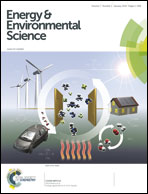Exceptional gravimetric and volumetric hydrogen storage for densified zeolite templated carbons with high mechanical stability†
Abstract
Zeolite templating successfully generates carbons with high surface area and pore volume of ca. 3300 m2 g−1 and 1.6 cm3 g−1, respectively. The templated carbons have an exceptional gravimetric hydrogen uptake of 7.3 wt% at 20 bar and −196 °C, and a projected maximum of ca. 9.2 wt%. These hydrogen uptake values are the highest ever recorded for carbon materials. The zeolite templated carbons have excellent mechanical stability and when compacted at a load of 10 tons (740 MPa) undergo densification to a packing density of ca. 0.72 g cm−3 but with hardly any loss in porosity (surface area and pore volume are little changed at ca. 3000 m2 g−1 and 1.4 cm3 g−1) or gravimetric hydrogen uptake capacity, which remains high at 7.0 wt% at 20 bar and a projected maximum of ca. 8.8 wt%. The effects of densification (i.e., increased packing density) coupled with hardly any loss in porosity or hydrogen uptake means that the densified zeolite templated carbons achieve an exceptional and unprecedented volumetric hydrogen uptake of 50 g l−1 at −196 °C and 20 bar, and an estimated maximum of up to 63 g l−1 at higher pressure.


 Please wait while we load your content...
Please wait while we load your content...